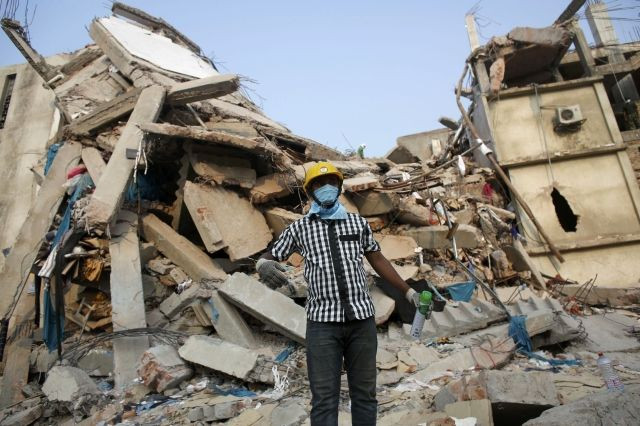Bangladesh Building Collapse Death Toll Rises To 273; Hundreds Of Garment Factory Workers Still Missing

Hundreds of people are still missing after a garment factory building collapsed in Bangladesh last Wednesday, with the death toll rising to 273 by Friday.
Forty-one people trapped amid the rubble of the eight-story building were rescued late Thursday, government minister Jahangir Kabir Nanak said about 40 hours after the disaster on the outskirts of Dhaka, Reuters news agency reported.
Nanak said the rescued people were working on the fourth floor and had all been trapped in one room of the Rana Plaza building, which is in the commercial suburb of Savar, about 30 kilometers (20 miles) from the capital.
Around 2,000 people have been rescued over the past two days, at least half of them injured, but as many as 1,000 people remain unaccounted for, a Reuters report said.
Some 3,122 people, mainly female garment workers, were inside the building at the time of the accident, the report added, citing a Bangladeshi official.
The incident sparked angry protests over poor safety standards, with demonstrators clashing with police outside the headquarters of Bangladesh Garment Manufacturers and Exporters Association (BGMEA), the BBC reported.
More than 1,000 textile workers gathered outside the BGMEA office on Thursday, pelting it with stones and clashing with riot police. The workers demanded all garment factories be shut and the owners harshly punished for accidents, Reuters reported.
Police said the owner of the building, Mohammed Sohel Rana, a local politician from the ruling Awami League, was aware of the building developing dangerous cracks on Tuesday.
The owner is said to be in hiding, but Prime Minister Sheikh Hasina promised that he will he held accountable.
British retailer Primark and Canada's Loblaw confirmed that their suppliers were housed in the building, Reuters reported.
Bangladesh is the world's biggest exporter of clothing after China and has around 4,500 garment factories that manufacture clothes for foreign brands including Tesco, Wal-Mart, JC Penney, H&M, Marks & Spencer, Kohl’s and Carrefour. However, enforcement of safety standards at the factories is believed to be inadequate, which has led to several deadly accidents in the past.
The industry, comprising 3.6 million garment workers, has also been criticized for its low pay, limited rights granted to workers, and often dangerous working conditions in the factories.
In June of last year, more than 300 garment factories in the Ashulia industrial belt, 30 kilometers (18 miles) north of the capital Dhaka, were shut down for almost a week, following five days of violent protests by half a million laborers demanding better wages.
Hundreds of people were injured in the unrest, during which tens of thousands of laborers clashed with the police, vandalized more than 100 vehicles and erected roadblocks that affected the industry.
In November last year, a fire at the nine-story Tazreen Fashion factory in Ashulia had killed more than 100 workers and injured even more. The factory made clothes for international brands including Dutch chain C&A and the Hong Kong-based Li & Fung Company.
© Copyright IBTimes 2024. All rights reserved.





















